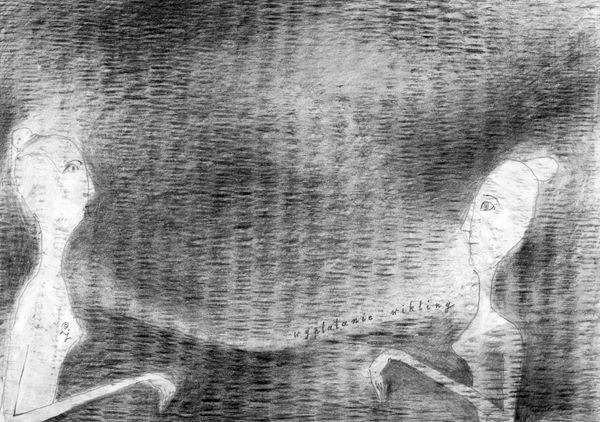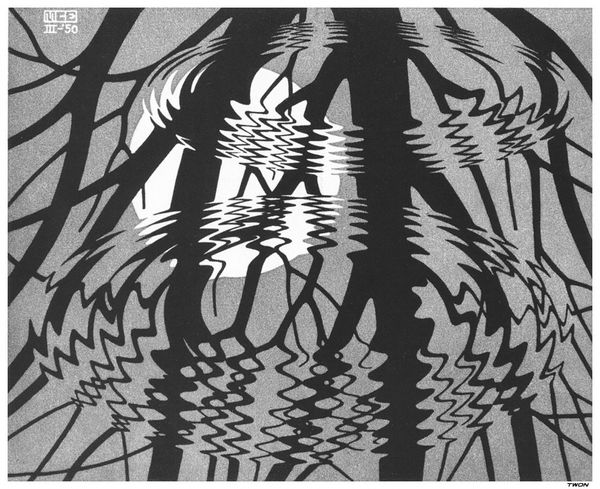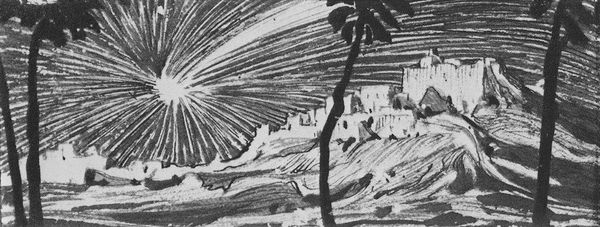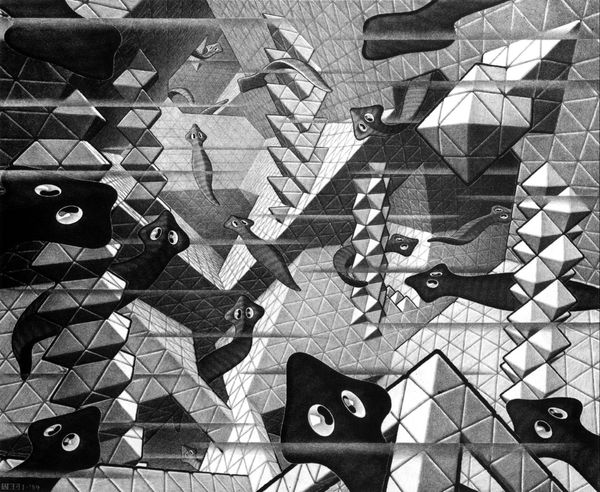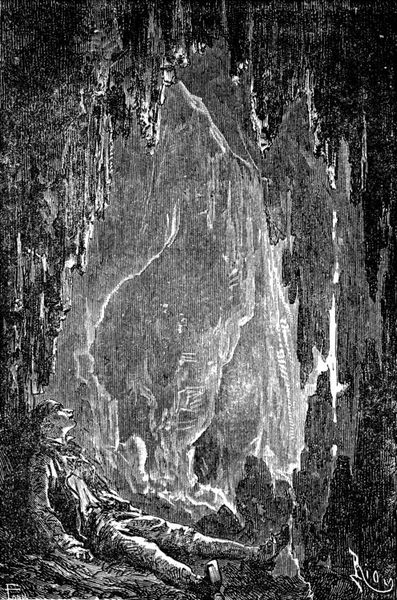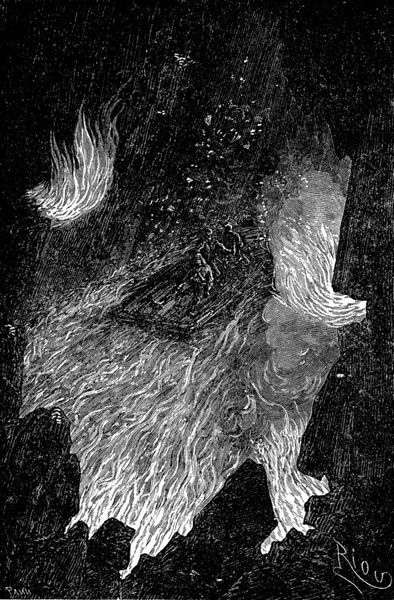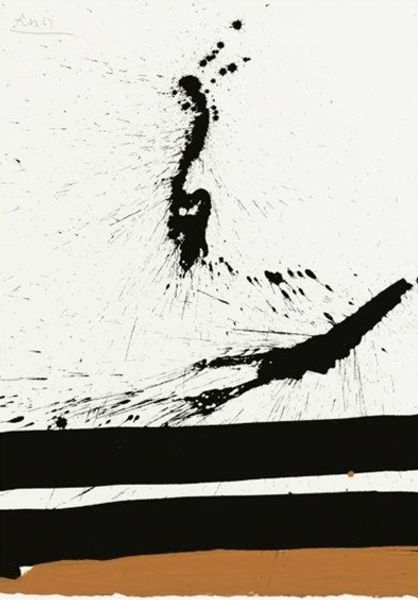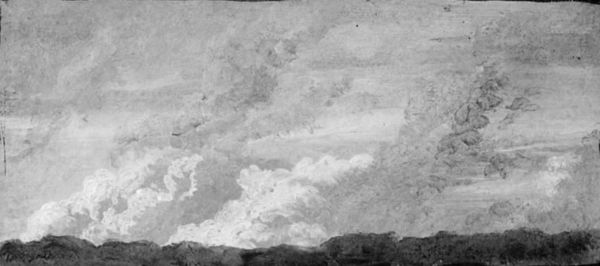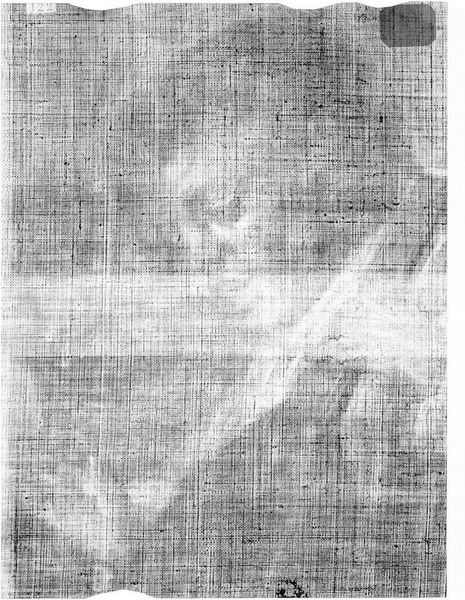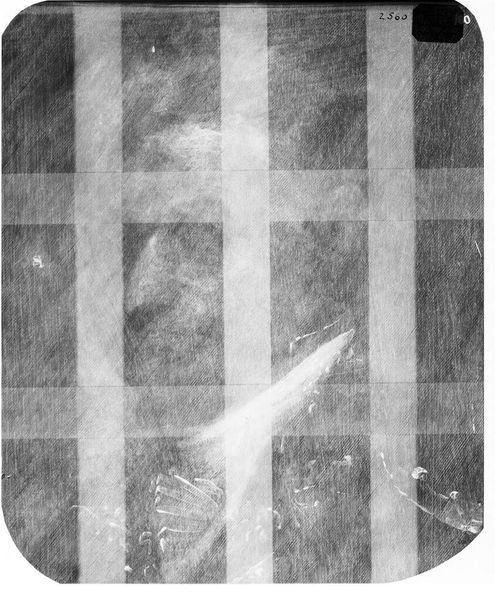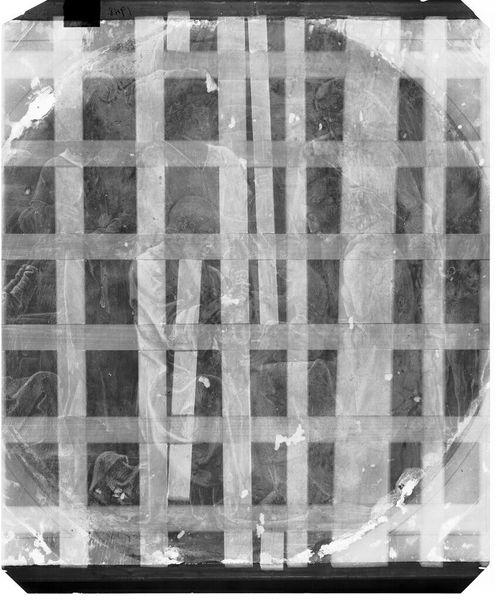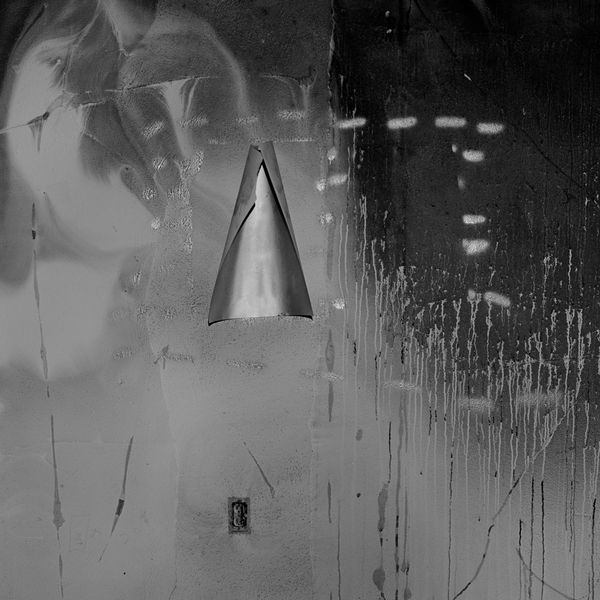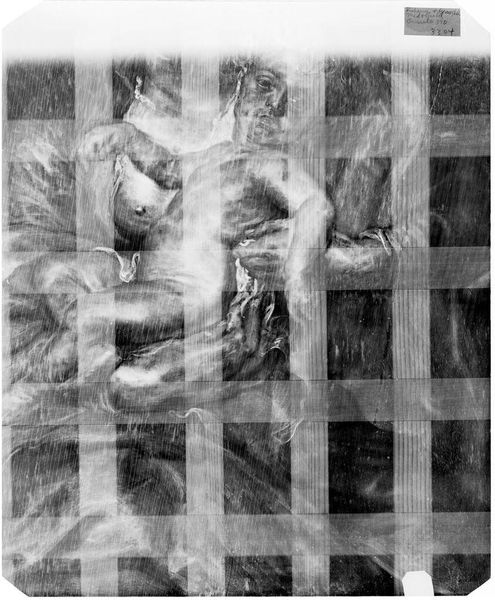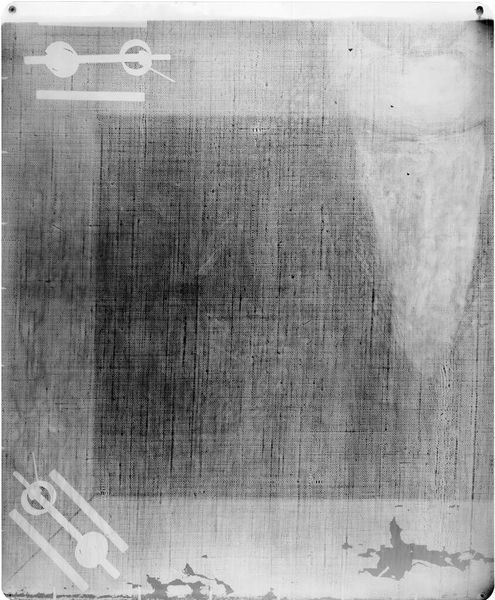
engraving
#
landscape
#
line
#
history-painting
#
monochrome
#
engraving
#
monochrome
Copyright: Public domain
Curator: So, here we have "Journey to the Center of the Earth," an engraving from 1864 by Edouard Riou, inspired by Jules Verne's novel. Editor: It’s such a dramatic piece. The overwhelming darkness contrasted by those sharp, crystalline shapes… it almost feels claustrophobic, despite the apparent scale. There’s something deeply unsettling about it. Curator: Yes, that tension is palpable. The image depicts the explorers deep within a cavern, their tiny lanterns illuminating a vast, geometric landscape. Riou was one of Verne's primary illustrators, so he played a crucial role in visually shaping these imagined worlds. Consider the historical context, too: anxieties around scientific discovery and colonial exploration. This engraving almost speaks to that fear of the unknown depths. Editor: Absolutely, and the monochrome medium amplifies that feeling. The stark black and white really lends itself to those narratives of adventure and uncertainty, doesn’t it? How do you think the novel itself contributed to this cultural fear or excitement, really? Curator: Verne tapped into the Victorian era's fascination with science and exploration. "Journey to the Center of the Earth" offered a thrilling, albeit scientifically dubious, descent into the planet's interior. These stories influenced people’s understanding of both our earth and ourselves. Plus, with imperialism rampant at the time, it probably also subtly explores questions of whose 'centre of the earth' are we talking about here, and for whom is this 'journey' really undertaken? Editor: Exactly, it’s this interplay of individual and societal fascination with the idea of inner Earth versus a lurking colonial-motivated violence, and of light versus darkness, the rational versus the inexplicable, that is just... genius. Do you find any sense of hope or even humor in the work? Curator: Perhaps, those tiny lantern flames offer a glimmer of hope, of human resilience in the face of the unknown. And the very premise of Verne's novel is fantastical, full of delightful improbabilities! I find myself amused that someone truly believed a story like this… almost sweet, in a way. Editor: Hmmm… while you can't ignore that aspect of wonderment, I keep going back to this overwhelming sense of otherness this print creates for me. Curator: Well, either way, I think that's what makes Riou's engraving, and Verne's story, so enduring: this potent blend of fear, wonder, and speculation about the world around—and within—us. Editor: Definitely food for thought as we reflect on how narratives can drive both excitement and terror.
Comments
No comments
Be the first to comment and join the conversation on the ultimate creative platform.
